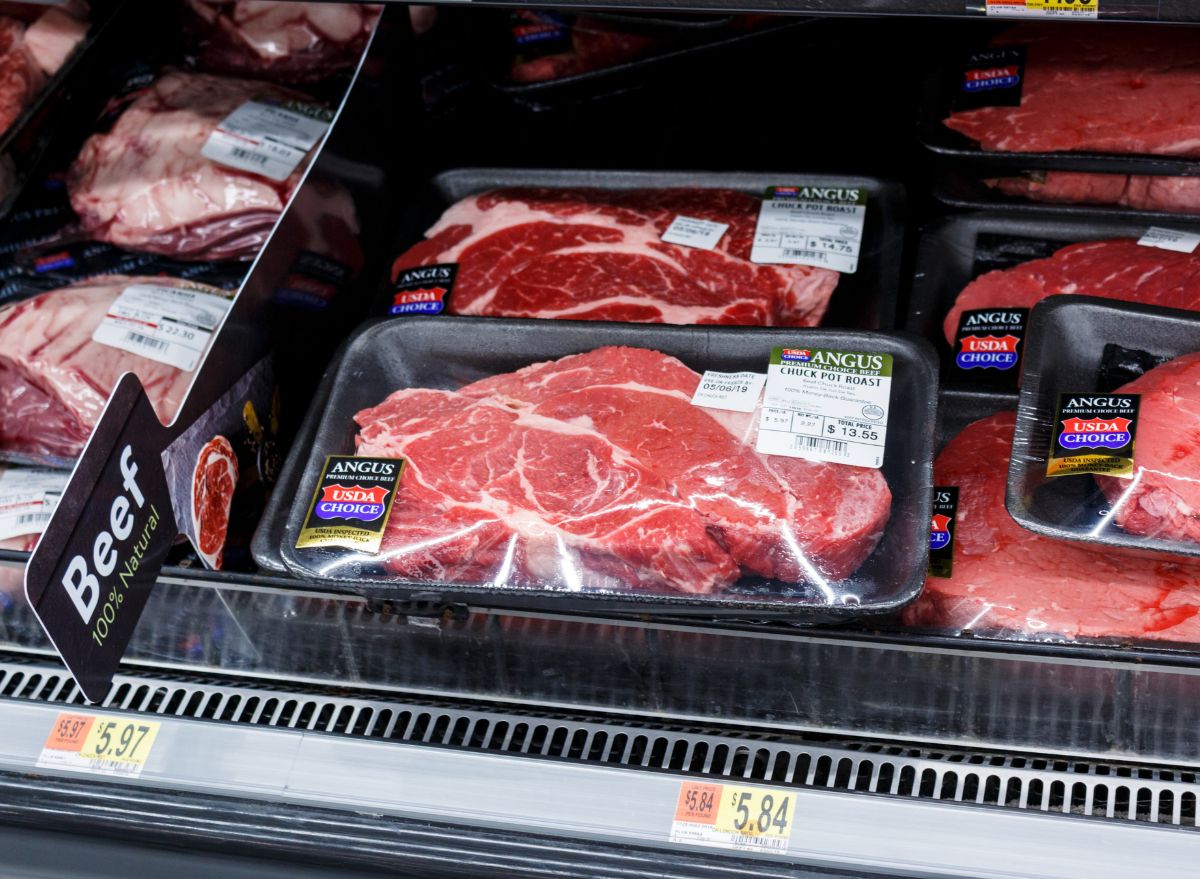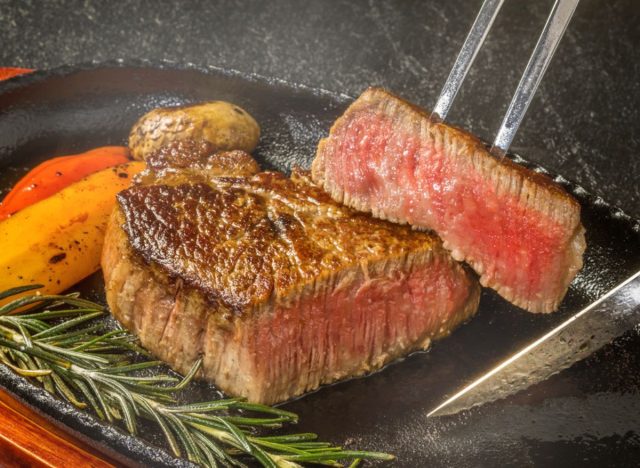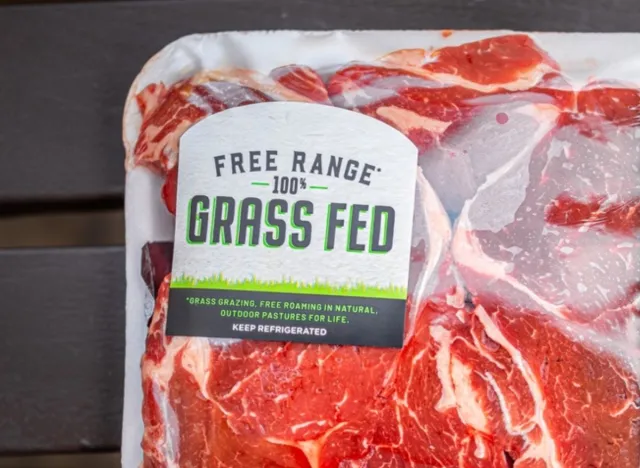The Surprising Secrets Behind Steak Grades, According to a Butcher

Steak grades are a lot more complicated than a simple A, B, or C. If you’ve ever been to a steakhouse or a nice restaurant and wondered why having USDA Prime steaks was such a big deal, we dove into the nitty-gritty details to better understand the current steak grading system. As a result, we found that steak grades don’t always mean what you think—and how the juiciest, most flavorful steak may not actually have a steak grade at all.
We spoke with James Peisker, a butcher, co-founder, and COO of Porter Road, who is always eager to suit up and join the butchers at Porter Road to prepare top-quality meats for their customers. Peisker explains the particulars when it comes to steak grades, and how a graded steak doesn’t always mean it’s a top-quality product.
Steak grades are all about intermuscular fat.
According to the U.S. Department of Agriculture, steak grades are given based on the marbling of fat—the little white streaks—within a meat’s muscle. There are three grades to keep in mind:
- USDA Prime: The highest quality product with an abundance of marbling.
- USDA Choice: Contains less marbling than Prime but is still considered a top product.
- USDA Select: Leaner than the other two, and may not have as juicy or flavorful.
“When [the government] looks at grading meat, they’re looking at the size of the eye, which is that that muscle that we know of on the New York strip, and the center muscle of the ribeye,” says Peisker. “They’re looking at the size of that, and the amount of intramuscular fat. The more intramuscular fat, the better the grade you’re going to get.”
A steak’s grade can vary based on other factors.

While a steak grade primarily comes from the intermuscular fat, there are a few other factors that can cause a “ding” in a steak’s grade.
“If you have a whole bunch of intramuscular fat, but you also have a whole bunch of outside fat, your score gets lessened because you have a really fat overfed product,” says Peisker. “Also, if you have like a really small eye, you will get dinged for that as well.”
Peisker also points out that in order to receive a steak grade, your animal must be under 30 months of age. If an animal was slaughtered after that 30-month mark, the meat is no longer eligible for a grade from the federal government. This, of course, creates some speculation around the need for steak grade, and what actually defines a quality piece of meat.
A graded steak doesn’t always mean it’s good.
Although a USDA Prime steak is considered the cream-of-the-crop, that doesn’t necessarily mean that meat is going to taste good. In fact, because the producer only has 30 months to create such a product, the animal is likely fed a not-so-nutritious diet and is given implants and hormones to fatten them up.
“You’re gonna have a fat steak that has zero flavor,” says Peisker. “There are times when you can have such a marbled steak that it literally just tastes like beef-flavored butter.”
The flavor of steak is all dependent on the animal’s diet. “It’s very subtle notes, but you pick up the terroir, where the animal lives, and you pick up the flavors of what the animal is fed,” he says. “If the entire diet consists of corn kernels and processed soybean meal, it’s going to have a much more mellow, boring flavor to it. But if an animal has the opportunity to free forage, the animal has an opportunity to exercise and live a little bit more natural life, it’s going to develop more of that flavor.”
To recap, the grading of a steak has nothing to do with the flavor, but simply the internal fat, the size of the eye, and the fat cap on the cut of meat.
Grass-fed meat typically does not get a steak grade.

Unfortunately, because a steak must stay within that 30-month mark, a grass-fed product typically won’t receive a steak grade due to the slower maturing process of the animal.
“If you are a more natural program, if you’re 100% grass-fed, most of the time you have to take your animal into harvest to slaughter later in its life,” says Peisker. “A real high-quality grass-fed beef that marbles out almost could never get a grade of Prime because they’re older. This grading system really encourages concentrated animal feeding operations.”
For example, at Porter Road, the animals are fed a non-GMO grain mixture in a trough (a mixture of silage and the entire corn plate, with a kernel that is chopped up and fermented over winter for nutritional value), but are also out on the pasture 100% of the time, giving the animals an opportunity to free forage with their diet. “Our product is definitely more nutritious than its commodity counterpart because of the free grazing out in the pasture,” he says. “And because they’re never given any growth hormones or antibiotics.”
How to choose the best steak
Peisker’s advice? If you’re looking for a truly great-tasting steak, the best thing to do is research where it came from. “Most of the things that we think about when it comes to flavor, those [come from] the vitamins and the nutrients, and micronutrients and macronutrients,” he says. “The more complex whatever we’re eating becomes, the more flavorful it becomes.”









